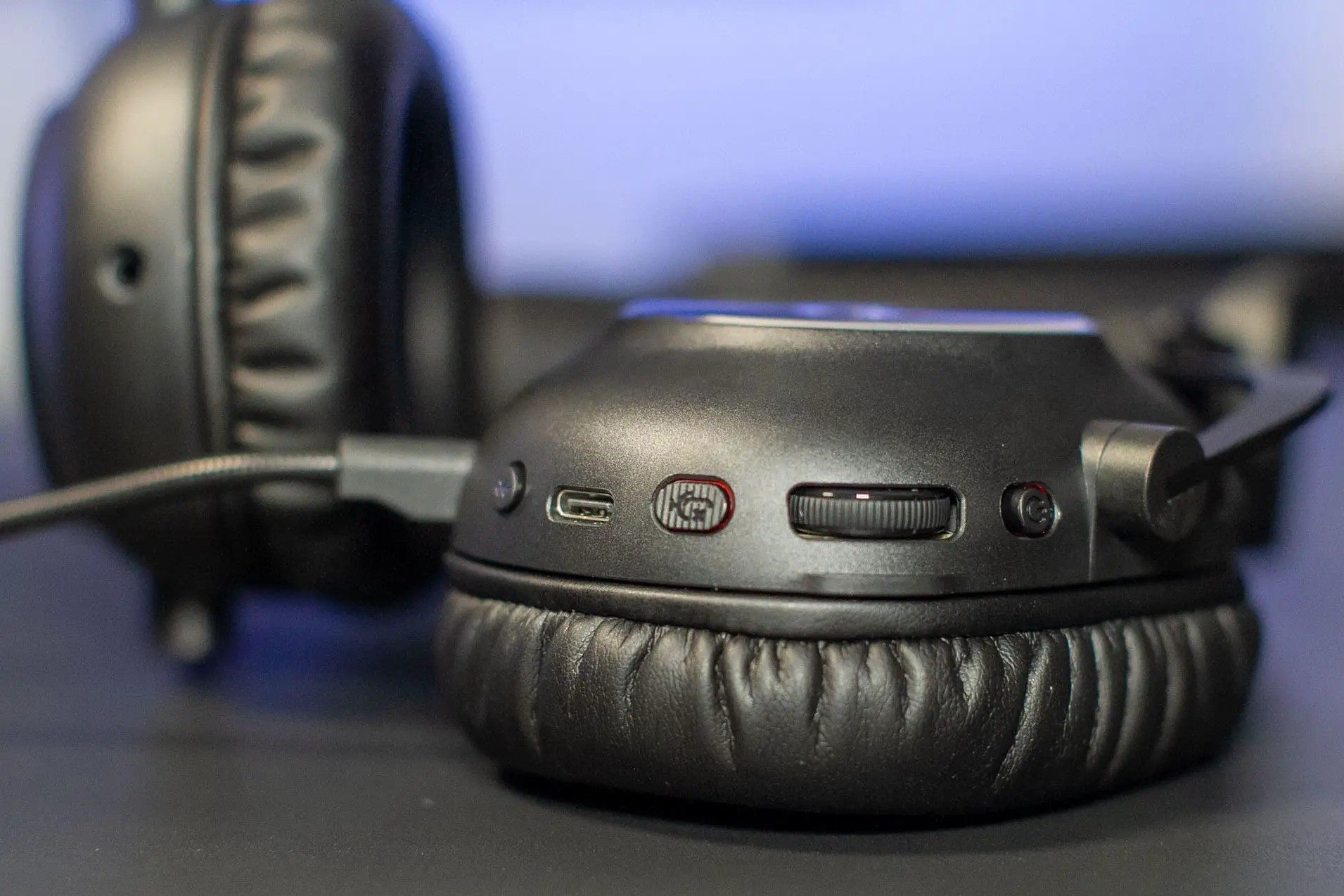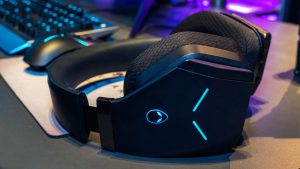Checking Compatibility
Before diving into the process of pairing your Logitech headset, it’s essential to ensure that your device is compatible with the headset model. This simple yet crucial step can save you time and frustration in the long run.
Here’s how you can check the compatibility of your Logitech headset:
- Refer to the product manual or the official Logitech website to verify the compatibility of your headset with your computer or mobile device. Logitech provides comprehensive information regarding the compatibility of each headset model with various operating systems and devices.
- Check the system requirements for the Logitech software that facilitates the pairing and customization of your headset. Ensure that your computer or mobile device meets these requirements to guarantee a smooth setup process.
- If you have a wireless Logitech headset, make sure that your computer or mobile device supports the necessary Bluetooth version or wireless connectivity protocol. This is crucial for seamless pairing and uninterrupted audio transmission.
By confirming the compatibility of your Logitech headset with your specific devices and operating systems, you can proceed with confidence, knowing that the pairing process will be hassle-free and the headset will function optimally.
Installing Logitech Software
Once you’ve confirmed the compatibility of your Logitech headset with your devices, the next step is to install the Logitech software. This software not only facilitates the pairing of your headset but also enables you to customize audio settings and control various features of the headset.
Here’s a step-by-step guide to installing the Logitech software:
- Visit the official Logitech website or use the installation CD that came with your headset to download the appropriate software for your specific headset model. Ensure that you download the latest version of the software to access the most up-to-date features and improvements.
- Follow the on-screen instructions to complete the installation process. The software installation wizard will guide you through the necessary steps, including accepting the end-user license agreement and choosing the installation location.
- Once the software is installed, launch the Logitech application and follow any initial setup prompts. This may include creating a user profile or customizing basic audio settings.
- Ensure that the software recognizes your Logitech headset by connecting it to your computer or mobile device using the provided cables or wireless connectivity options. The software should detect the headset and display it in the list of connected devices.
By installing the Logitech software, you gain access to a plethora of features that enhance the functionality of your headset. From adjusting audio levels to customizing equalizer settings, the software empowers you to tailor the audio experience to your preferences.
Once the software is successfully installed and your headset is recognized, you’re ready to move on to the next steps in the pairing process.
Connecting the Headset
With the Logitech software installed and ready to go, it’s time to connect your headset to your computer or mobile device. Whether your headset utilizes a wired or wireless connection, the following steps will guide you through the process of establishing a seamless connection:
- Wired Connection: If your Logitech headset utilizes a wired connection, simply plug the appropriate cable into the headset and the corresponding port on your computer or mobile device. Ensure that the connection is secure to prevent audio disruptions.
- Wireless Connection: For wireless Logitech headsets, follow the pairing instructions provided in the headset’s manual or through the Logitech software. This typically involves activating the pairing mode on the headset and then initiating the pairing process on your computer or mobile device.
- Bluetooth Pairing: If your Logitech headset utilizes Bluetooth connectivity, ensure that Bluetooth is enabled on your computer or mobile device. Then, follow the on-screen prompts within the Logitech software to pair the headset with your device. Once paired, the headset should appear as an available audio output option.
After establishing the connection, test the audio output by playing a sound or music file. Ensure that the audio is clear and that the headset functions as expected. If you encounter any issues, refer to the troubleshooting section for guidance on resolving common connectivity issues.
By successfully connecting your Logitech headset to your computer or mobile device, you’re one step closer to enjoying an immersive audio experience tailored to your preferences.
Adjusting Audio Settings
Now that your Logitech headset is connected to your computer or mobile device, it’s time to fine-tune the audio settings to suit your preferences and optimize the listening experience. The Logitech software provides a range of customizable audio options, allowing you to personalize the sound output according to your needs.
Here’s how you can adjust the audio settings using the Logitech software:
- Equalizer Settings: Access the equalizer feature within the Logitech software to adjust the balance of frequencies and tailor the audio output to your preferred sound profile. Whether you prefer enhanced bass for music or a balanced sound for gaming, the equalizer settings empower you to achieve the desired audio quality.
- Microphone Settings: If your Logitech headset includes a microphone, the software allows you to adjust microphone sensitivity, noise cancellation, and other voice-related settings. This ensures that your voice is captured clearly during calls or gaming sessions.
- Surround Sound Options: For headsets that support surround sound, the Logitech software enables you to configure the spatial audio settings, enhancing the immersive experience during gaming or multimedia playback.
- Volume and Balance Control: Easily adjust the overall volume and balance between the left and right audio channels to achieve a comfortable and balanced listening experience.
After customizing the audio settings to your liking, test the changes by playing various types of audio content, such as music, videos, or games. This allows you to assess the impact of the adjustments and fine-tune the settings further if necessary.
By leveraging the audio customization features provided by the Logitech software, you can elevate your audio experience and enjoy tailored sound output that aligns with your unique preferences and usage scenarios.
Customizing Controls
Logitech headsets often come equipped with customizable controls that allow users to personalize their interaction with the device, enhancing convenience and usability. The Logitech software provides a platform for users to configure these controls according to their specific preferences and usage scenarios.
Here’s how you can customize the controls of your Logitech headset using the Logitech software:
- Button Mapping: If your headset features programmable buttons or controls, the Logitech software enables you to assign specific functions to these buttons. Whether it’s adjusting audio settings, activating voice commands, or launching specific applications, the button mapping feature offers flexibility in tailoring the headset’s controls to your needs.
- Shortcut Assignments: Customize shortcut commands for quick access to frequently used features or applications. This streamlines your workflow and enhances productivity, especially during gaming sessions or multimedia interaction.
- Profile Management: Create and manage multiple profiles within the Logitech software, each tailored to different usage scenarios. For example, you can have a gaming profile with specific control mappings and audio settings, and a separate profile optimized for music or video playback.
- Voice Command Integration: Some Logitech headsets support voice commands for hands-free control. The software allows you to customize voice command settings, including voice recognition sensitivity and command responses.
By customizing the controls of your Logitech headset, you can streamline your interaction with the device, optimize its functionality, and create a personalized user experience that aligns with your unique preferences and usage habits.
Troubleshooting Common Issues
While setting up and using your Logitech headset, you may encounter common issues that can impact the functionality and performance of the device. Understanding how to troubleshoot these issues can help you swiftly address any concerns and ensure a seamless audio experience.
Here are some common issues and troubleshooting tips for Logitech headsets:
- Audio Playback or Recording Issues: If you experience distorted audio, low volume, or microphone malfunctions, ensure that the headset is properly connected to the correct audio ports. Additionally, check the audio settings within the Logitech software to confirm that the correct audio output and input devices are selected.
- Wireless Connectivity Problems: For wireless headsets, ensure that the headset is adequately charged and within the effective range of the wireless receiver or Bluetooth connection. Interference from other devices or low battery levels can impact wireless connectivity.
- Software Recognition Problems: If the Logitech software does not recognize the connected headset, reinstall the software and ensure that the headset is securely connected to the device. Additionally, check for software updates that may address compatibility issues.
- Microphone Sensitivity and Quality: If the microphone sensitivity is too low or the voice quality is poor, adjust the microphone settings within the Logitech software. Ensure that the microphone is positioned correctly and that ambient noise is minimized for optimal voice capture.
- Compatibility Issues: If the headset is not functioning as expected with specific applications or games, check for compatibility updates or patches for the software or games. Logitech often provides compatibility updates for popular applications and games to ensure seamless integration.
Should you encounter any of these issues, refer to the troubleshooting section of the Logitech manual or the official Logitech support website for detailed guidance. Additionally, community forums and user groups can provide valuable insights and solutions based on shared experiences.
By familiarizing yourself with common troubleshooting techniques, you can swiftly address any issues that arise, ensuring that your Logitech headset continues to deliver an exceptional audio experience.


